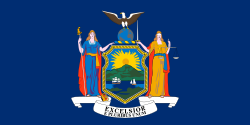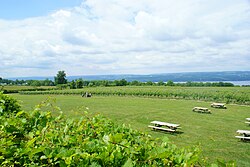 | |
| Department overview | |
|---|---|
| Formed | April 29, 1926 |
| Jurisdiction | New York |
| Department executive |
|
| Key document | |
| Website | agriculture.ny.gov |
The New York State Department of Agriculture and Markets is the department of the New York state government that enforces laws relating to agriculture, weights and measures, and the production, processing, transportation, storage, marketing and distributing of food. [1] It principally investigates animal and plant diseases, regulates food safety and labeling, promotes state agriculture, and administers the New York State Fair. [2] Its regulations are compiled in title 1 of the New York Codes, Rules and Regulations .
